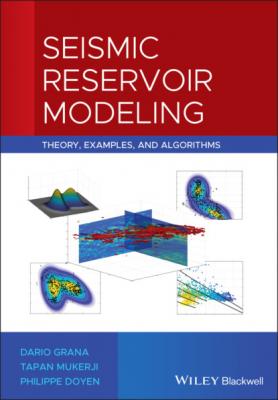ТОП просматриваемых книг сайта:
Seismic Reservoir Modeling. Dario Grana
Читать онлайн.Название Seismic Reservoir Modeling
Год выпуска 0
isbn 9781119086192
Автор произведения Dario Grana
Жанр География
Издательство John Wiley & Sons Limited
In general, the probability that a Gaussian random variable X takes values in the interval (μX − σX, μX + σX) is approximately 0.68; in the interval (μX − 2σX, μX + 2σX) is approximately 0.95; and in the interval (μX − 3σX, μX + 3σX) is approximately 0.99. Therefore, there is a high probability that the values of the Gaussian random variable
Because a Gaussian PDF takes positive values in the entire real domain, when using Gaussian distributions for bounded random variables, such as volumetric fractions, or positive random variables, such as velocities, one should truncate the distribution to avoid non‐physical outcomes or apply a suitable transformation (Papoulis and Pillai 2002), such as the normal score or logit transformations of the original variables.
1.4.4 Log‐Gaussian Distribution
We then introduce the log‐Gaussian distribution (or log‐normal distribution) that is strictly related to the Gaussian distribution. Log‐Gaussian distributions are commonly used for positive random variables. For example, suppose that we are interested in the probability distribution of P‐wave velocity. To avoid positive values of the PDF for negative (hence non‐physical) P‐wave velocity values, we can take the logarithm of P‐wave velocity and assume a Gaussian distribution in the logarithmic domain. In this case, the distribution of P‐wave velocity is said to be log‐Gaussian.
We say that a random variable Y is distributed according to a log‐Gaussian distribution
Figure 1.9 Log‐Gaussian probability density function associated with the standard Gaussian distribution in Figure 1.8.
(1.34)
where μX and
The mean μY and the variance
(1.35)
(1.36)
(1.37)
(1.38)
Figure 1.9 shows the log‐Gaussian distribution associated with the standard Gaussian distribution
A log‐Gaussian distributed random variable takes only positive real values. Its distribution is unimodal but it is not symmetric since the PDF is skewed toward 0. The skewness s of a log‐Gaussian distribution is always positive and is given by:
(1.39)

